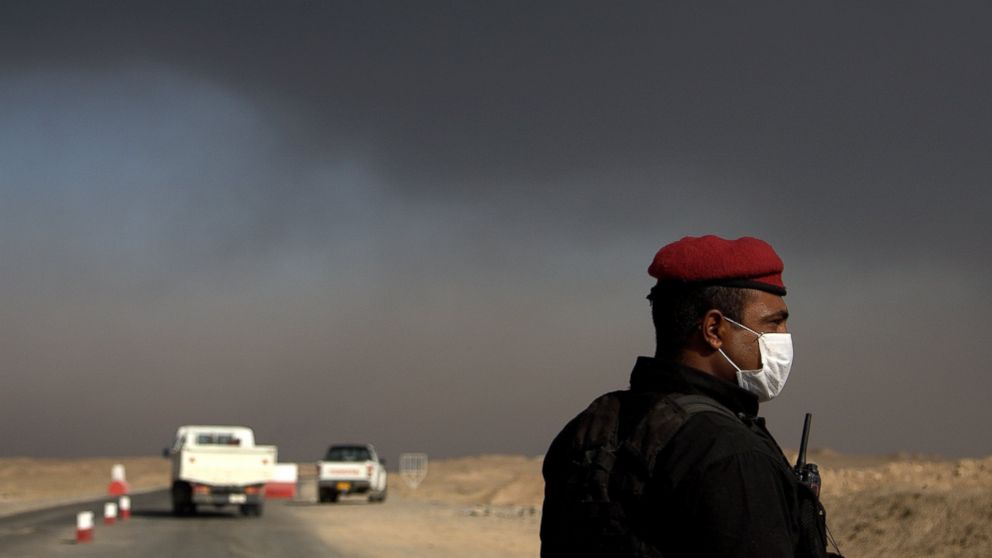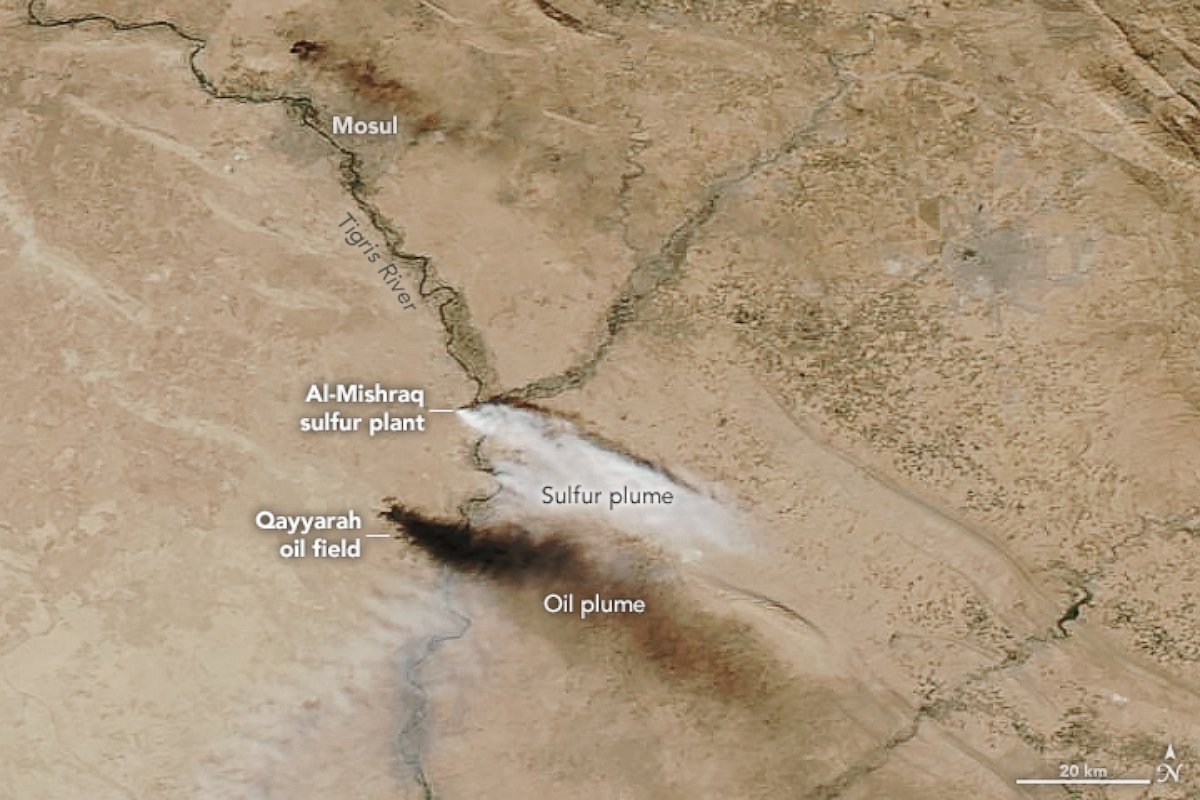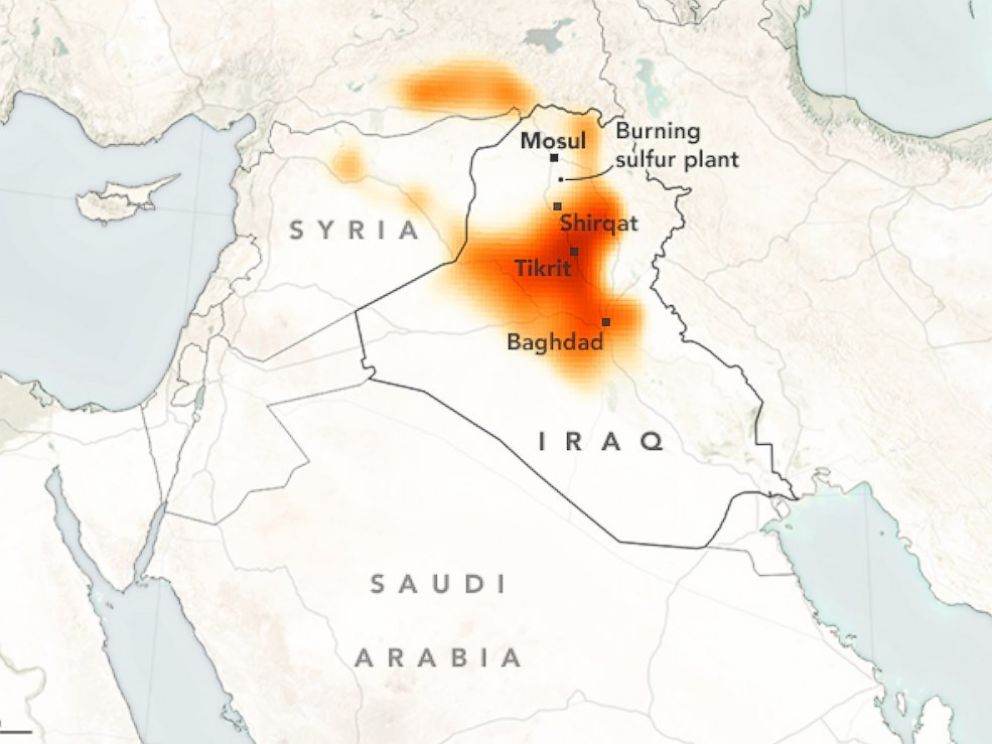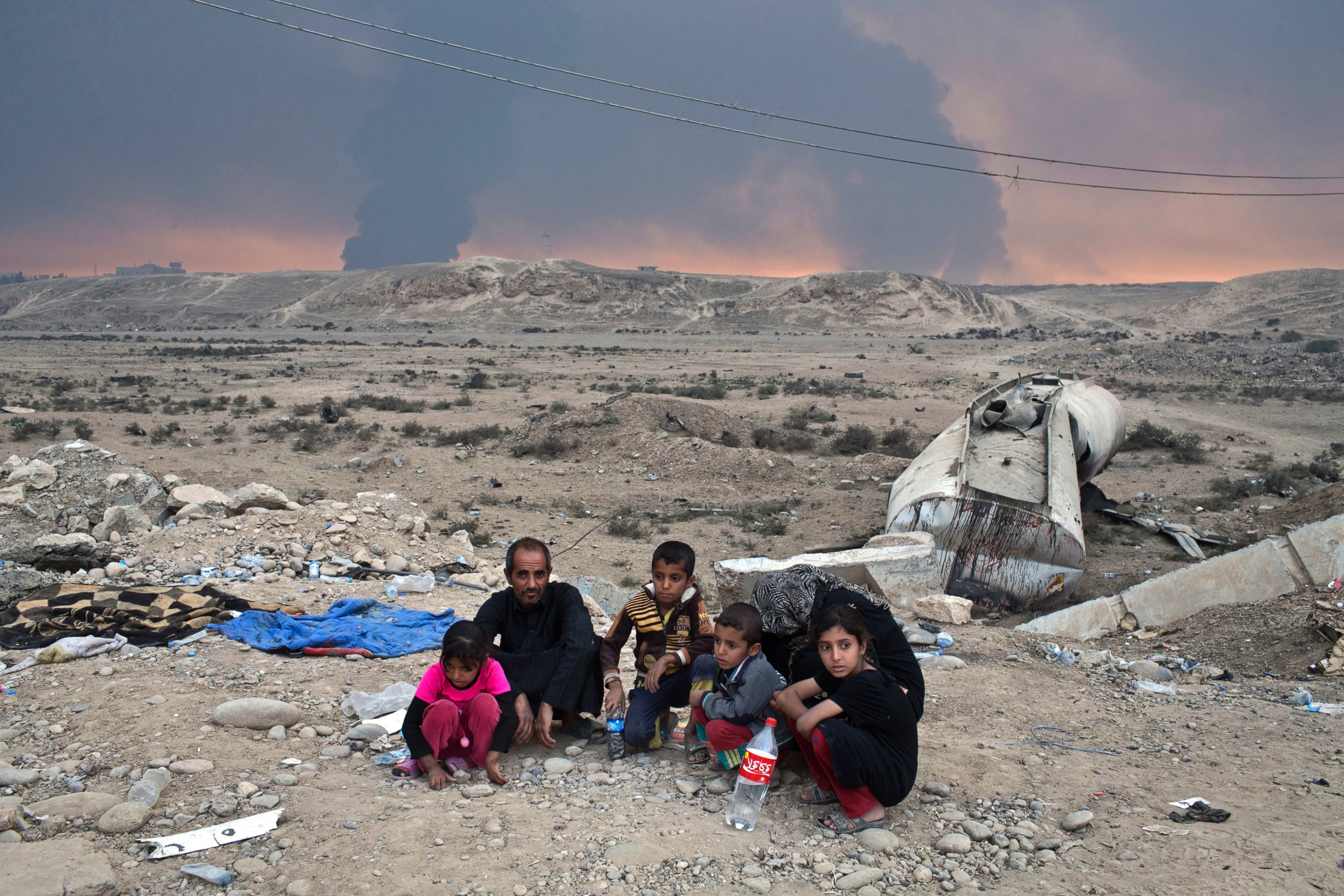Sulfur Dioxide Plume Moving Across Iraq, Satellite Images Show
ISIS set fire to a sulfur plant in Iraq and it's visible from space.

— -- New images released by NASA show a dangerous sulfur plume moving across northern Iraq in the wake of the battle to retake Mosul.
As the Iraq military announced its operation to capture Mosul, which has been under ISIS control for over two years, ISIS set fire to the Al-Mishraq sulfur plant and Qayyarah oil field south of the city in an effort to provide cover from coalition airstrikes.

NASA said its ozone monitoring instruments detected a large sulfur dioxide plume dispersing across northern and central Iraq as early as last week. Initially, that sulfur dioxide was in lower parts of the atmosphere, but the plume has now reached higher into the atmosphere due to shifting winds.
“In the first few days, the fire did not appear to be particularly energetic and our preliminary observations suggest that much of the sulfur dioxide remained in the boundary layer and the lower troposphere, which accentuates the impact on air quality and health,” said Simon Carn, an atmospheric scientist at Michigan Tech. ”More recently, sulfur dioxide has been lofted to higher altitudes where it may undergo long-range transport.”

Growing concentrations of sulfur dioxide can impair breathing and even be life threatening. Al Jazeera reported that two people have already died from breathing in the sulfur, and hundreds have been taken to a nearby hospital with respiratory problems.
Civilians south of Mosul who were interviewed by al-Mawsleya TV wore masks and scarves to cover their faces from the toxic gas.
As a precautionary measure, the U.S. military said Saturday it has taken air samples to analyze the smoke. Coalition personnel at Camp Swift and Qayyarah West Airfield, about 50 miles south of Mosul, have been directed to limit their outdoor activity, and some have voluntarily chosen to wear protective gas masks, according to a military press release.

The coalition has also provided 24,000 "protective" chemical masks to Iraqi and Kurdish troops as they continue to push toward Mosul.
“The coalition is trained. We’ve trained the [Iraqis] and peshmerga; they’ve got equipment,” Army Maj. Gen. Gary Volesky, commander of U.S. ground forces in Iraq, said in the release. “We’re confident that as the enemy attempt to use a lot of means -- not just chemicals -- we’re targeting the training with the Iraqis and with the coalition to make sure we’re mitigating any risk of that threat.”
Even so, the emissions from the sulfur plant have been enormous. Atmospheric scientist Simon Carn tweeted that if the sulfur dioxide was released from a volcano instead of the plant, it would already be among the largest eruptions of 2016.
SO2 from the #Iraq sulfur fire, Oct 25. If fire = #volcano, it would be among the largest eruptions of 2016 (a quiet year so far) @NASANPP pic.twitter.com/TGJak3Pxcr
— Simon Carn (@simoncarn) October 25, 2016
Repeating History
In 2003, fires -- most likely set on purpose -- to the same Al-Mishraq sulfur plant burned for nearly a month, emitting 21 kilotons of toxic sulfur dioxide per day, according to NASA.
"That is roughly four times as much as is emitted each day by the world’s largest single-source emitter of sulfur dioxide, a smelter in Noril’sk, Russia," NASA said.
Some U.S. troops in that region experienced the effects of exposure to those toxic emissions. According to the Department of Veterans Affairs, a group of soldiers from Fort Campbell, Kentucky, who were stationed in Iraq and spent a significant amount of time near the fire, were evaluated for pulmonary symptoms in 2007.
"Many of these service members reported a significant change in their ability to run two miles on the Army physical fitness test," the VA said.
The VA lists health effects from sulfur dioxide exposure as irritation and reddening of the nose and throat, eye irritation, and coughing.
"At high levels, these gases can burn the skin and cause severe airway obstruction, hypoxia (inadequate supply of oxygen to the body) and pulmonary edema (fluid accumulation in the lungs)," the VA said.
The VA allowed veterans to file a claim for disability compensation for health problems they believed were related to the sulfur dioxide exposure.
“After a month of burning, the 2003 fire had released roughly 600 kilotons of sulfur dioxide—so much that it was the largest non-volcanic release of sulfur dioxide we had ever observed with satellites,” said Nikolay Krotkov, an atmospheric scientist at Goddard Space Flight Center. “Hopefully, the current fire will be controlled well before emissions reach that level.”




